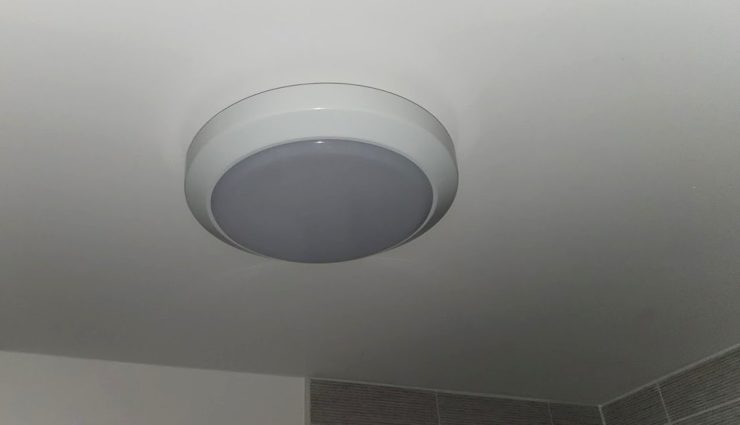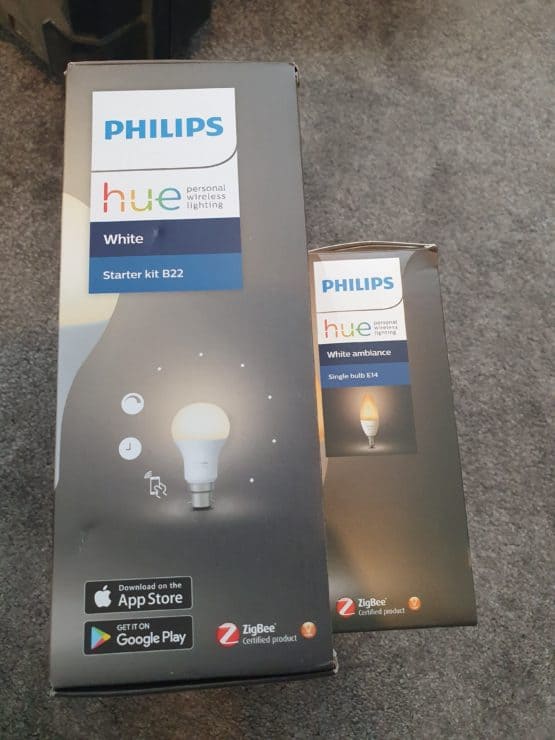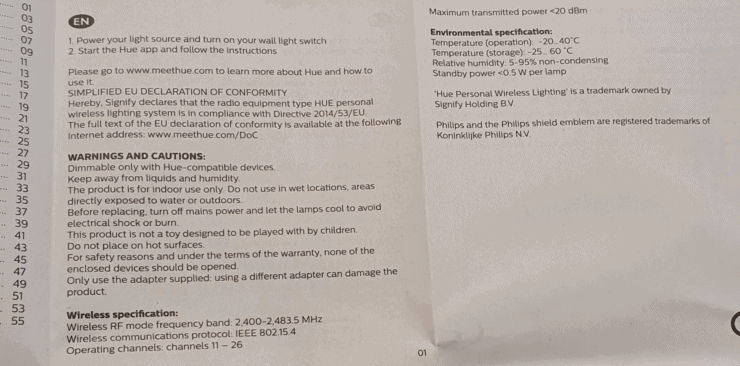An enclosed light is a housing which is completely sealed off, such that any light must shine out of the partially see-through exterior surface (usually glass or translucent plastic). Enclosed light fixtures are good where you want light to shine mainly downwards, without any ‘being wasted’ out of the side or top – bathrooms and food-preparation areas are examples of this.
The problem, though, is that LED bulbs are known to have issues within enclosed fixtures. Since Philips Hue smart bulbs are just LEDs with some extra circuity, do they also have problems inside enclosed fixtures unlike incandescent bulbs?
Using Philips Hue lights inside enclosed light fixture can effect your Hue warranty. It may also damage the internal circuity, depending on how long the light is kept on throughout the day.
Enclosed light fixtures
As mentioned above, an enclosed light fixture is one that is totally sealed off, and they usually have solid sides and top – meaning that light can only shine out from the bottom. As a result, a see-through bottom surface is often used, such as glass or translucent plastic.
It’s usually the case that the surface isn’t completely see-through, however, otherwise you’d see the internals of the light. Instead the bottom surface is partially opaque, meaning that it’ll let the light through without showing off all the internals.

Whilst it seems like many modern lights are moving to ‘open lights’ (i.e. ones that aren’t totally sealed off on all sides), enclosed fixtures do have some benefits:
- Since light isn’t wasted shining out of the sides and top, it’ll focus all the light out from the bottom. This can create a nice mood-lighting for the bedroom, along with being useful in areas that you’re often under the light – such as bathrooms and food-preparation areas.
- Modern enclosed lights can actually look quite sleek, a far-cry from the old bathroom lights with ‘stipple effect’ glass. These can be more of a fashion statement than other, cheaper lights by offering a nice looking light at a usually low price.
- More and more modern bathroom light are built as a simple-to-install, all-in-one enclosed light with specially designed LEDs inside that offer lots of brightness. These purpose-built enclosed lights are usually quite cheap to buy, but they look great and work really wekk.
Using LEDs in enclosed light fixtures
The main problem with enclosed light fixture is that – since they’re sealed off on the sides and top/bottom – they don’t let heat dissipate easily. In-fact, sometimes the heat can keep building up inside the light fixture – eventually damaging your light bulbs.
LEDs are particularly bad at dealing with excess heat. This might seem a weird fact considering that LEDs actually give off much less heat than other types of bulbs, but LEDs are designed to give off – and experience – low amounts of generate heat. They therefore don’t react well when there’s heat build-up, and the LED bulbs lifespan can be reduced if they’re used within an enclosed light fixtures.
This is because LEDs dissipate their own waste heat, and are designed to do so in very small surface area (i.e. just around the surface of the light bulb – it’s not like the bulb has a fan to blow the heat away!). LEDs therefore rely on the temperature around the bulb to be fairly low in order for the heat dissipation to work effectively.
Equally, LEDs can become less efficient when the ambient temperature is high: since the LED is hotter, the junction voltage will be lower, causing the LED to draw less energy efficiency from the constant current LED driver. This can lead to the color being emitted being slightly ‘off’, the bulb emitting less light (i.e. appearing dimmer), or the bulb even flickering on/off.
In short:
LED + Excess Heat = Bad!
LEDs which can be used in enclosed fixtures
Having said all of this, you may recall that I mentioned how you can buy ‘all in one’ enclosed fixtures that contain LED lights. Wait, what? Well, these are usually specially designed lights that can have some sort of ventilation built in (maybe the top is ¼” from the ceiling and has a small vent strip?), but they also contain LEDs that are rated for use within enclosed fixtures.
An example might be the newer range of standard Philips bulbs that are “enclosed fixture rating”. These bulbs can incorporate LED heatsinks – basically a series of fins (either in a row, or circle) that will allow the heat to dissipate out over a large surface area. This can be just enough to stop the heat from building up, even inside an enclosed fixture.
Instead of this, some of the purpose-built ‘all in one’ enclosed fixtures also contain low-power LED strips instead of bulbs, freeing up more room for the light to deal with heat build-ups.
What Philips Hue says about enclosed fixtures
If you look closely at a Philips Hue smart bulb box…

… you’ll see nothing at all related to enclosed light fixtures! Apparently some boxes do mention this under “Warnings and Cautions” (or the booklet contained within), but none of my Hue bulb’s boxes or booklets mention anything:

Having said that, if you do some Googling, you’ll see Amazon reviews that say that Philips told them:
Currently the Hue bulbs are not designed to work in ceiling fan fixtures or enclosed fixtures. Having your Hue bulbs in these application will cause your Hue bulb to fail and void their warranty. With your bulbs being used in this application we will not be able to warranty your Hue bulb at this time.
Philips Customer Service email to an Amazon customer, July 2017
Or you’ll come across a Reddit thread where their Hue bulbs failed, but Philips said they wouldn’t honor the warranty because they’re voided it from using it in an enclosed fixture:
based on the information provided, bulb being used in an enclosed fixture which is not recommended. Therefore, warranty voids on the product.
Arash, Philips Customer Satisfaction Department, February 2019
So whilst Philips’ warranty doesn’t clearly mention this (which makes me wonder how Philips customer service can void warranties without this being mentioned in the warranty?), it definitely does seem that you’ll be unprotected if you use your Philips Hue bulb in an enclosed fixture, and it then fails before the 2-3 warranty is up.
Using Philips Hue bulbs in enclosed fixtures regardless..!
So you’re a wize guy, eh? You want to ignore the (poorly defined) rules and put your Hue bulbs in an enclosed fixture? You rebel.
Well, if you do this this you’ll (apparently) void your warranty, but will you actually see any negative impact beyond that?
Most people have said no: they have used multiple Hue bulbs in an enclosed fixture for years, and not seen any issues. I’ve spoken to some people from fairly warm parts of America – who have really hot summers – and they haven’t had any issued with their Hue bulbs.
The key thing here is that whilst heat will build up inside an enclosed fixture, the bigger question is how long you’ll leave the light on for? If it’s on for 16 hours a day, the bulb’s internal circuity will almost certainly start to degrade from the heat build up.
But a light that’s only on for 5-10 minutes at a time, and less than 10 times a day (such as a bathroom light), will probably not get the required heat build-up to start damaging the internal circuity.
This is the crucial point: yes, using a Hue bulb inside enclosed fixtures will affect your warranty, but if you accept this risk and you won’t be using the light fixtures too often throughout the day, you’ll probably be fine.
I say probably because I can’t say for sure, I’m not Philips, I’m not a lawyer, I’m not an electrician (etc etc) – so proceed at your own risk – but be sensible and use some common sense and you should hopefully be fine.
As a final point, an older 800 lumens Philips Hue bulb will output less light – and hence heat – than one of their newer 1,200 lumen bulbs. So the older generation bulbs will probably last for longer inside enclosed fixtures, by nature of the fact that they generate less heat.

If you have any questions, feedback or suggestions about this article, please leave a comment below. Please note that all comments go into a moderation queue (to prevent blog spam). Your comment will be manually reviewed and approved by Tristan in less than a week. Thanks!